From jaw-dropping touchdowns to legendary plays that cement reputations, the NFL Hall of Fame is where gridiron gods are immortalized. Or is it? As revered as this institution is, it’s not immune to controversy. While some athletes have made it to this sacred hall with records that speak volumes, others have slipped through the cracks, leaving us scratching our heads.
Could the definition of ‘greatness’ have evolved over the years, or is it that the Hall’s selection process isn’t as foolproof as we’d like to believe? Buckle up, sports fans—because we’re about to dive deep into a roster of NFL Hall of Famers whose enshrinement might just warrant a second look.
Dan Hampton
It’s true that the Chicago Bears’ legendary “Monsters of the Midway” defense was overflowing with elite talent in the 1980s. And defensive tackle/defensive end Dan “Danimal” Hampton was undoubtedly considered one of those big-time playmakers. The 4-time Pro Bowler recorded an impressive 57 sacks over 12 rugged seasons on a star-studded unit. But when you analyze Hampton’s individual career numbers more closely, they seem to come up a bit short compared to other Hall of Fame defensive linemen from his era.
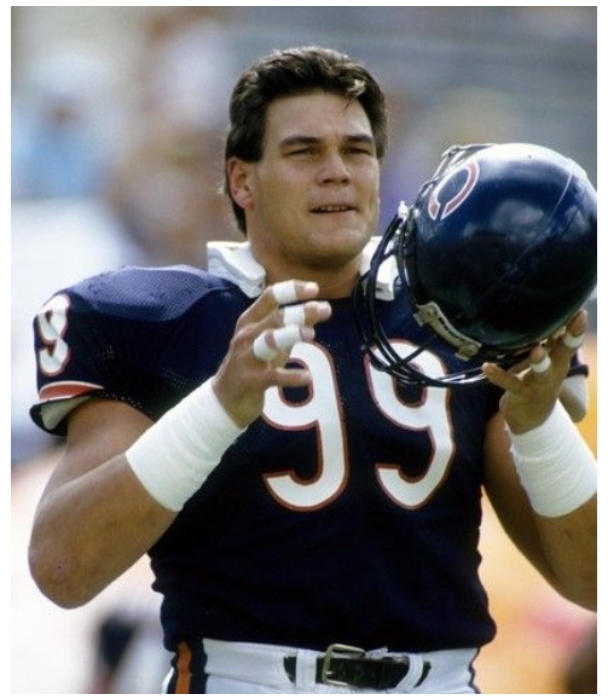
For instance, his sack total doesn’t even crack the top 50 all-time. And he never led the NFL in any major statistical category. It makes you wonder if Hampton benefitted statistically from playing alongside future HOFers like Richard Dent, Mike Singletary, and Steve McMichael. There’s no doubt Hampton was an excellent player on an all-time great defense. But if you isolate his personal accomplishments, there’s a strong argument his résumé falls just short of true Hall of Fame worthiness. He was likely aided by the incredible surrounding talent during his Chicago years.
Jan Stenerud
Jan Stenerud, who starred as a kicker for the Kansas City Chiefs in the 1960s and 1970s, was definitely a trailblazer in multiple respects. The Norwegian native was one of the very first placekickers born outside of the United States to make a name for himself in pro football. He also helped popularize the unconventional “soccer-style” kicking technique, eventually becoming the universal standard we see today. But despite his pioneering status, Stenerud’s raw numbers simply do not stack up when you compare him to other kickers currently enshrined in Canton.
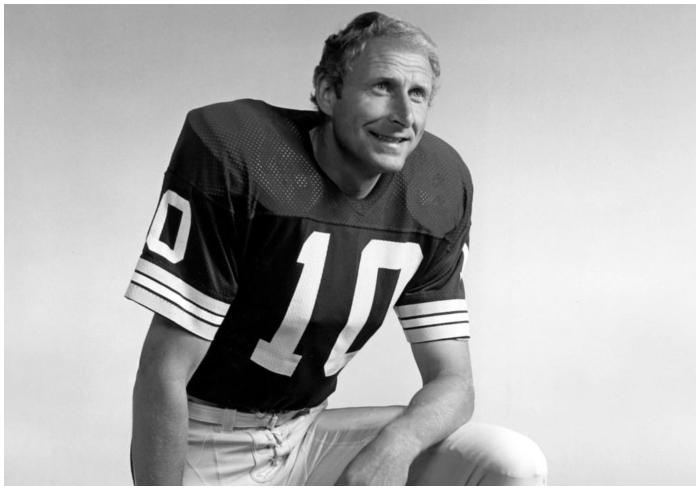
Although he did make 4 All-Pro teams during his 19-year career, his lifetime field goal percentage of 66.8% is decidedly mediocre. For example, fellow Hall of Famer Morten Andersen – the only other pure kicker in Canton – finished with a far superior 79.7% success rate. So, while Stenerud brought “soccer style” kicking across the pond into prominence, his pedestrian statistics make him seem one of the weakest legacies immortalized in the Pro Football Hall of Fame.
Russ Grimm
The NFL has an exceptionally long list of players who shined brightly for 3 or 4 seasons before fading into obscurity. Those short-lived stars can be remembered for winning Super Bowl titles during their fleeting prime. Guard Russ Grimm definitely benefited from that championship effect. Despite only being a full-time starter for one of Washington’s three 1980s-era Super Bowl winners, Grimm built a reputation as a key cog on those legendary Hog offensive lines. And some aspects of Grimm’s NFL tenure are certainly praiseworthy.
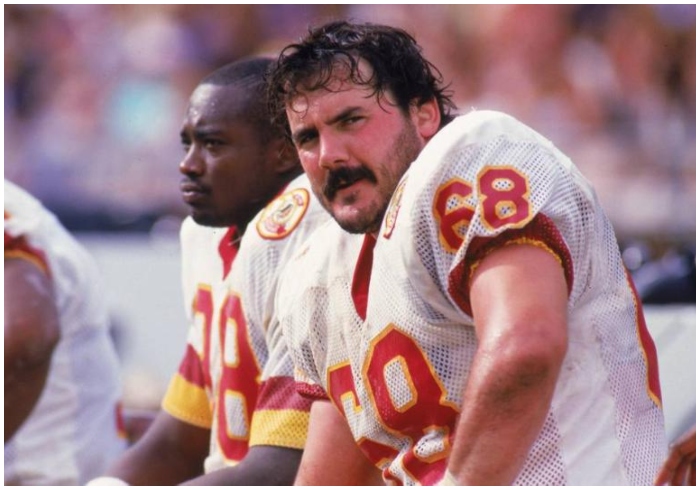
For instance, he scored 4 All-Pro nods and was named to the prestigious All-Decade Team for the 1980s. However, when you analyze Grimm’s overall body of work compared to other Hall of Fame guards, his résumé clearly comes up lacking. He earned far fewer Pro Bowl selections than his contemporaries and didn’t sustain excellence over a long time. So, while the Super Bowl aura boosted his fame, Grimm’s playing career itself falls short of true Canton-level greatness.
Terrell Davis
There’s no denying running back Terrell Davis was an absolutely transcendent force for the back-to-back Super Bowl champion Denver Broncos in the late 1990s. Without Davis’ dominant production, it’s highly unlikely John Elway would have ever hoisted the Lombardi Trophy. At his peak, Davis captured league MVP honors in 1998, made 3 straight Pro Bowls, and was also named 1st Team All-Pro 3 times. However, that unbelievable run of excellence was painfully short-lived. Due to recurring knee injuries, Davis’ total career spanned just 78 games – the equivalent of less than 5 full seasons.
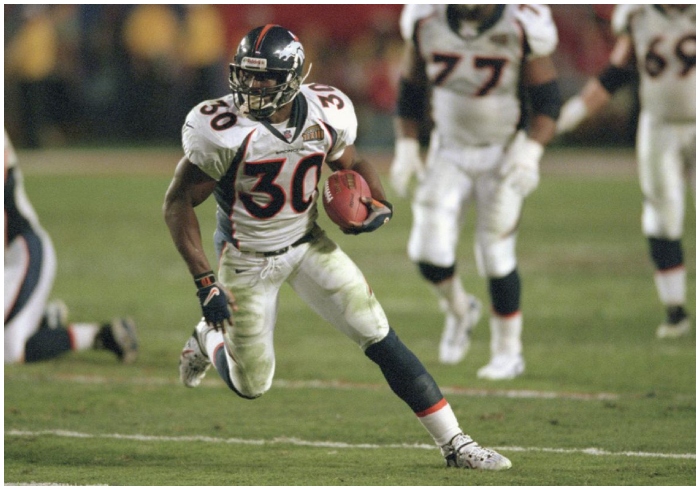
While he was arguably the NFL’s best rusher for that brief stretch, Davis simply does not have the longevity or lifetime statistics normally required for Hall of Fame enshrinement. Despite his scintillating prime, the brevity of Davis’ playing days makes him one of the weakest resumes ever immortalized in Canton. His stunning peak will always be remembered, but his body of work lacks the depth and staying power the Hall of Fame necessitates.
Marv Levy
Within the city of Buffalo, Marv Levy is rightfully celebrated as an absolute legend. The coach’s progressive leadership style garnered deep admiration from both Bills fans and players alike. And Levy steered his perennial Super Bowl contender to the brink of the NFL mountaintop on 4 agonizing occasions. However, despite all those trips deep into January, Levy was ultimately never able to secure a championship for his Bills teams.
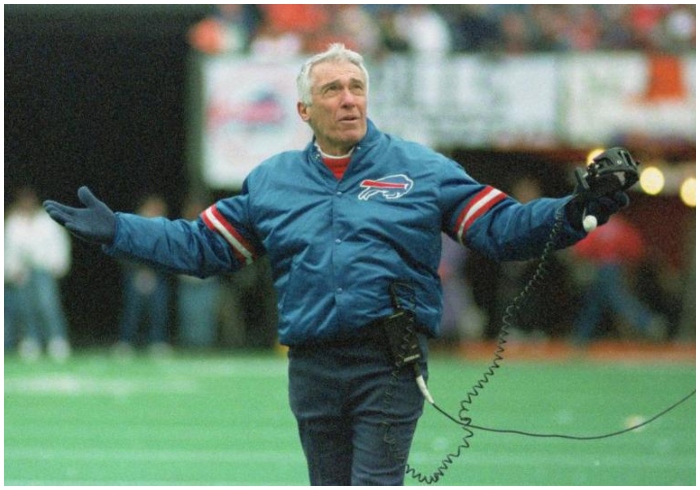
When assessing his full body of work, Levy’s career win-loss record reveals some deficiencies that seem unworthy of pro football immortality. Across 17 seasons, Levy finished with a rather pedestrian record of 143-112, with an unremarkable career winning percentage of just 56.1%. Those middling totals simply do not stack up compared to Canton’s greatest coaching minds. So, while Levy’s Bills teams came tantalizingly close to glory, his overall resume lacks the championship ring and consistency required for Hall of Fame confirmation.
Bob Griese
The term “game manager” has become something of a backhanded compliment for quarterbacks over the past decade. But in his era, Hall of Famer Bob Griese was the perfect embodiment of a game-managing QB. As the pilot of Miami’s dynasty in the early 1970s, Griese masterfully facilitated the Dolphins’ punishing rushing attack and stingy defense. However, when you analyze Griese’s raw passing statistics compared to fellow Hall of Fame quarterbacks, he lags far behind in the numbers department.
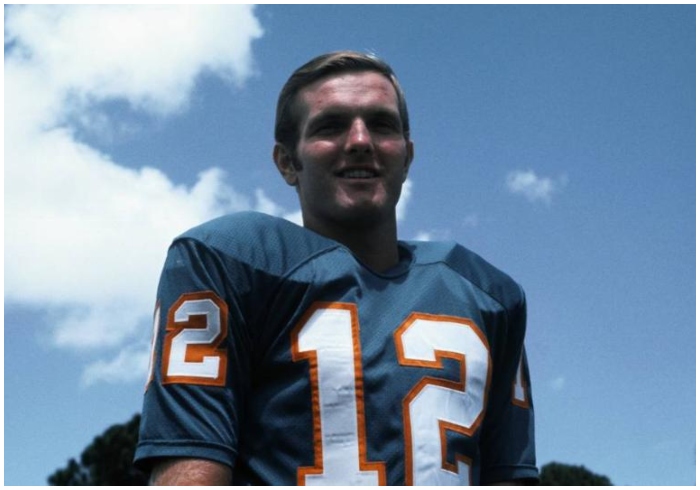
For instance, he never averaged more than 2,500 yards passing in any season of his 14-year career. And his lifetime passer rating of 77.1 doesn’t even rank inside the top 50 all-time. While Griese deserves respect for leading Miami to sustained success, his accomplishments simply pale compared to the true gunslingers enshrined in Canton. He was the perfect game manager for his era. Still, the limitations of his own talent prevented Griese from being considered an inner-circle Hall of Famer.
Dick LeBeau
Dick LeBeau enjoyed a 14-year career as a savvy defensive back for the Detroit Lions in the 1960s and early 1970s. He was talented enough at his position to earn 3 Pro Bowl selections during that span. However, his resume falls a bit short of true all-time greatness when comparing LeBeau strictly as a player to others at his position in Canton. But after retiring, LeBeau embarked on an extraordinarily successful second act as a defensive coordinator, most notably guiding Pittsburgh’s ferocious units in the 2000s.
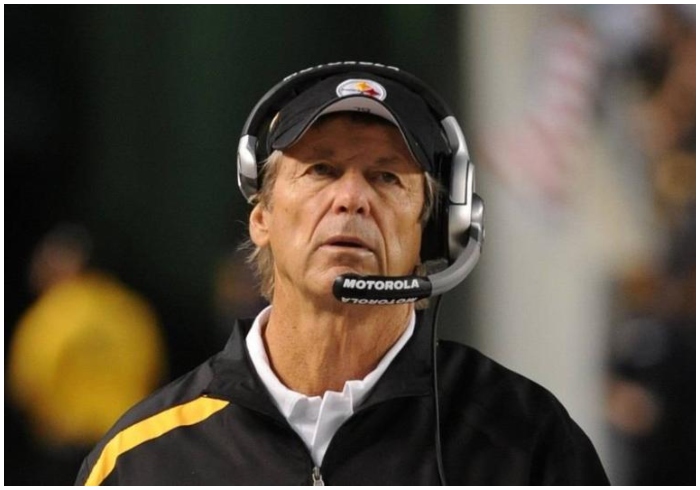
One could make the case that the combined success of his playing days and coaching genius seems worthy of Hall of Fame honors. But LeBeau was only enshrined as a player, and his performance on the field simply does not stack up to the elite legends at his position already in Canton. He was an excellent player and a brilliant coach. Still, LeBeau’s bronze bust recognizes a playing career that came up slightly short of immortal greatness.
Art Monk
When considering candidates for the Pro Football Hall of Fame, there is always debate over players who were very good for a stretch versus players who compiled impressive career totals. Wide receiver Art Monk was one of those “compiler” cases. Although he only made 3 Pro Bowls over 16 seasons, Monk retired as the NFL’s all-time receptions leader. At the time, that shiny new record seemed to punch Monk’s ticket to Canton.

However, over time, his catch total has been surpassed, and he now ranks 20th all-time. Compared to today’s pass-happy era, his single-season high of 106 grabs doesn’t seem Canton-worthy either. Monk was undoubtedly a steady, consistent receiver. But he lacked the dominance required for enshrinement and mostly relied on exceptional longevity to climb the record books. In retrospect, that compiler label indicates Monk’s individual playing career falls just short of Hall of Fame suitability.
Lynn Swann
Lynn Swann enjoyed an incredibly memorable career as a wide receiver for the dominant 1970s Pittsburgh Steelers. Known for his spectacular, balletic catches, Swann was also a 4-time Super Bowl champion. But when you compare Swann’s raw statistics to other Hall of Fame receivers, his resume is sorely lacking in substance. In 9 years, he only made 1 All-Pro team and went to just 3 Pro Bowls. His career-high for receptions was a meager 61 catches in a season. And he never eclipsed 1,000 receiving yards in any single year, either.
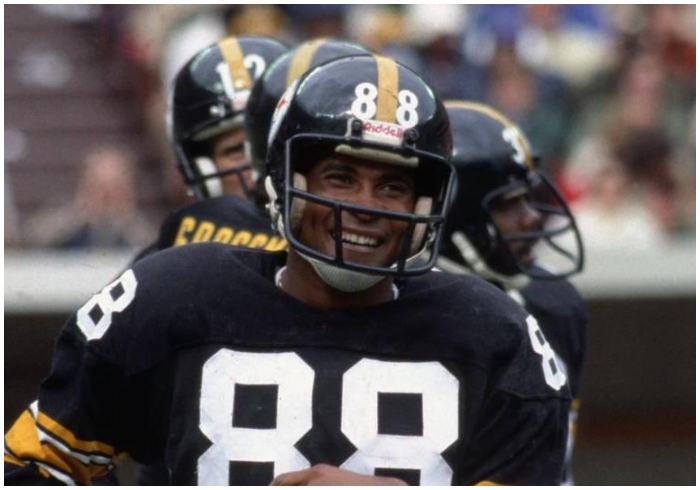
Swann was undoubtedly a big-game player who shone brightest on the biggest stages. But his regular season stats simply don’t add up to anything close to Canton-worthy for an era when receivers put up far less gaudy numbers. Based on his individual performance, Swann clearly falls below the high statistical bar set for modern wide receiver inductees.
Harry Carson
Linebacker Harry Carson enjoyed a 13-year career from 1976 to 1988, mostly with the New York Giants franchise. He began his tenure laboring for dreadful Giants teams but capped it off by winning a Super Bowl in 1986. Respected as a team leader, Carson mentored young defensive stars like Lawrence Taylor and Carl Banks. While Carson was selected to 9 Pro Bowls, he only made 2 All-Pro teams and was often the 3rd best LB in New York behind Banks and Taylor.

Though undoubtedly an outstanding player for over a decade, Carson lacked the sheer dominance and game-changing impact expected of the all-time greats enshrined in Canton. He was a respected leader who registered longevity. But Carson’s individual resume falls just shy of the elite level required to be considered an immortal Hall of Fame linebacker.
Jerome Bettis
In the 1990s and early 2000s, bulky running back Jerome “The Bus” Bettis rumbled through defenses as one of the NFL’s last true workhorse rushers. During his 13 seasons, Bettis racked up a hefty 13,662 career rushing yards, an impressive total in raw bulk. However, when analyzing his efficiency, those totals were compiled with a less-than-stellar 3.9 yards per carry average.

Bettis also didn’t contribute much as a receiver, catching only 200 passes in his career. Compared to more multifaceted contemporaries like Marshall Faulk or Barry Sanders, Bettis simply did not produce at a truly elite level. He was the last of the league’s brute force, high-volume runners. But measuring his actual on-field impact reveals numbers that don’t quite add up to Canton-worthy for a modern-era running back.
John Riggins
In the 1970s and early 80s, running back John Riggins was the NFL’s quintessential bruising, sledgehammer rusher. Weighing over 230 pounds, the powerful Riggins bulldozed through defenses while playing for both the New York Jets and Washington Redskins. He was especially counted on in short-yardage and goal-line situations. However, despite his fearsome reputation, Riggins was not an efficient or dynamic runner when analyzing the raw statistics.
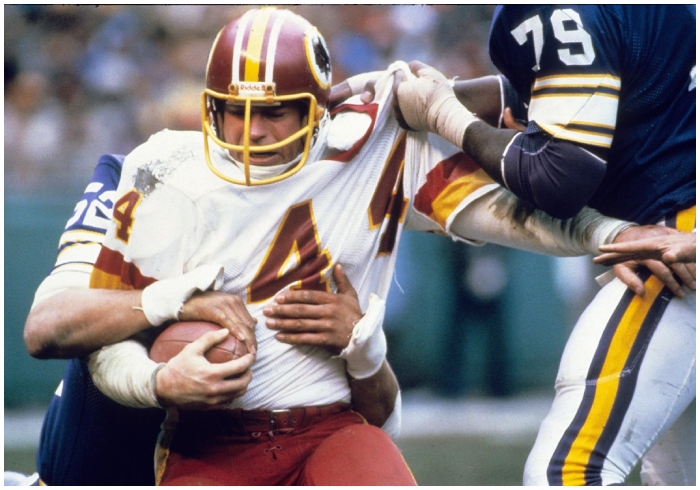
Even playing behind Washington’s acclaimed “Hogs” offensive line, Riggins finished his career with a pedestrian yards per carry average under 4.0. And with just 250 receptions in 14 seasons, he was not much of a receiving threat either. Riggins certainly earned iconic status as a tough, high-volume ball carrier. But in truth, the limitations of his straightforward run-only style made his production far less efficient than the numbers of today’s Canton-worthy backs.
Tony Dungy
As head coach of the Tampa Bay Buccaneers and Indianapolis Colts, Tony Dungy built a reputation as an innovative defensive mind who achieved tremendous regular season success. He is credited with pioneering the famed “Tampa 2” scheme. And his regular season record of 139-69 confirms his knack for consistently winning. However, Dungy’s playoff results paint a starkly different picture.

His career postseason record was a disappointing 9-10. And until finally capturing a title in 2006, Dungy’s teams routinely underperformed in January. While he did win a Super Bowl, Dungy’s overall resume lacks the ring-filled postseason dominance of the greatest coaches enshrined in Canton. His regular season wisdom simply didn’t translate when it mattered most.
Dave Casper
For whatever reason, tight ends can prove challenging for Hall of Fame voters to evaluate. Dave Casper was a solid tight end and key contributor during the Oakland Raiders’ 1970s dynasty, winning Super Bowl XI. But measured against his contemporaries, Casper’s skills fell noticeably short.
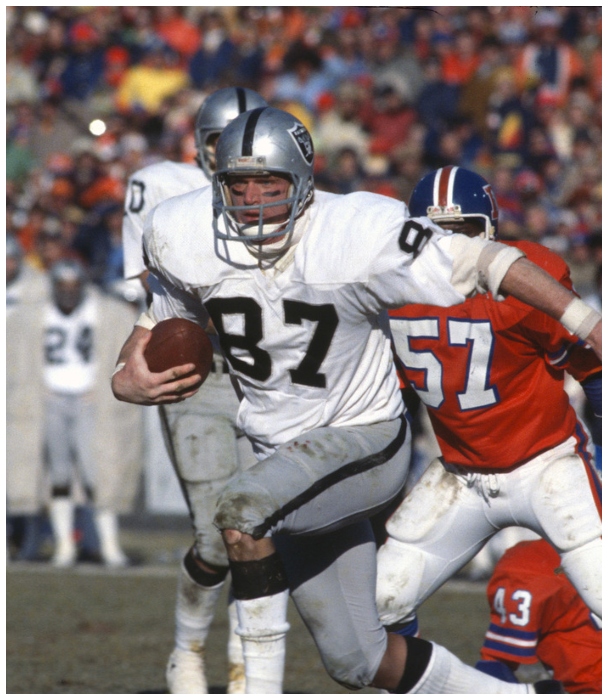
He played simultaneously as fellow inductees Ozzie Newsome and Kellen Winslow, who revolutionized the pass-catching tight end position while excelling as blockers. Casper couldn’t match their well-rounded dominance. A capable but unspectacular player, Casper doesn’t clear the lofty Canton bar set by the true legends who redefined his position.
Charlie Sanders
Evaluating older tight ends for the Hall of Fame poses challenges. In previous eras, tight ends had to both block and catch passes extensively. But today’s players are often specialized as either blockers or receivers. During his 10-year career for the Detroit Lions, Charlie Sanders was certainly regarded as an excellent blocker.

However, his receiving statistics look rather hollow compared to modern standards. Sanders only caught 386 total passes, averaging 38 per season. And his pedestrian career totals of 31 touchdowns and 4,817 yards simply don’t match up against more prolific inducted tight ends. Sanders was considered a standout in his day. But judged on production alone, his body of work falls short.
Dan Dierdorf
Offensive tackle Dan Dierdorf was undoubtedly a standout player for a stretch of his St. Louis Cardinals career in the 1970s. He earned First-Team All-Pro honors for five seasons as one of the NFL’s elite blockers. But a severe knee injury in 1980 robbed Dierdorf of his dominance prematurely. Though he soldiered on for a few more years, he was never the same player following that setback.
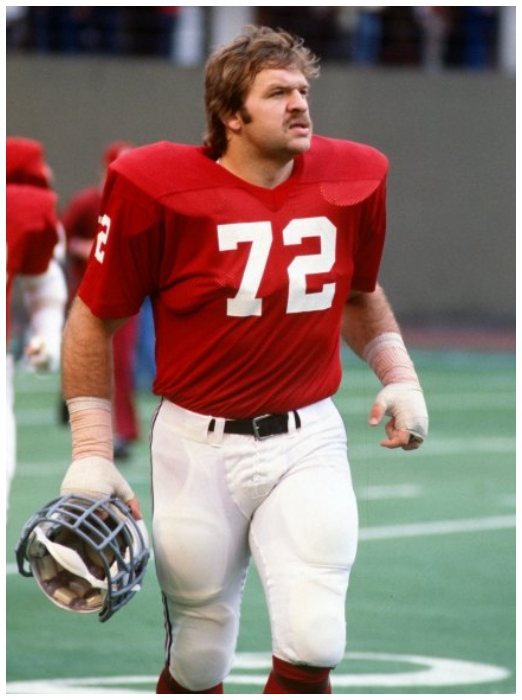
After retiring, Dierdorf became a legendary NFL broadcaster praised for his insights. His enshrinement may have been partly boosted by that second act’s success. Because he was judged solely as a player, Dierdorf’s peak was too short-lived to warrant Hall of Fame immortality. His playing career alone simply does not meet the standard of sustained excellence set by the all-time greats at his position.
Terry Bradshaw
As quarterback for the dynastic 1970s Pittsburgh Steelers, Terry Bradshaw is one of the most famous names in NFL history. And his celebrity profile remains high today as a prominent football broadcaster. But his raw playing statistics reveal Bradshaw was an average QB elevated by playing on arguably the greatest teams ever assembled.

His career TD-to-INT ratio of 212-210 is hardly impressive. And his mediocre 51.9% career completion percentage is another glaring deficiency. No doubt Bradshaw deserves credit for capably leading a loaded roster. However, compared objectively to other Hall of Fame quarterbacks, his individual numbers show a player carried more by extraordinary surroundings than innate ability.
Bob Hayes
Growing up, wide receiver Bob Hayes never had much time to refine his football skills because he was busy becoming an Olympic sprint champion. When the Cowboys drafted Hayes in 1964, he was incredibly raw as a football player. Just reaching the NFL was an achievement, given his limited experience. For a brief stretch, Hayes flashed elite potential, making the Pro Bowl his first 3 seasons. But he faded quickly from stardom as opponents adjusted to his straight-line speed.
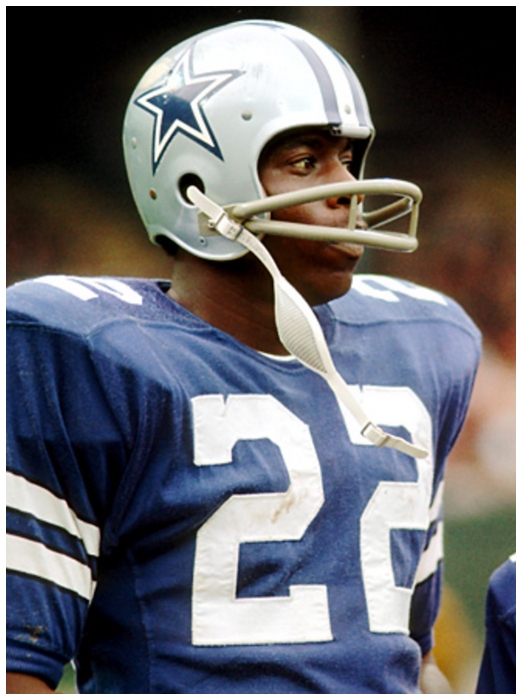
Hayes simply never developed the complete skill set required of a dominant receiver. With only 371 career catches, his production pales in comparison to the game’s true greats at the position. Hayes deserves praise for overcoming significant obstacles just to play pro football. But his body of work lacks the depth and consistency of a Hall of Fame resume.
Cris Carter
Though finally enshrined in 2013, wide receiver Cris Carter had to wait longer than expected to enter the Hall of Fame. After starting his career in Philadelphia and starring for Minnesota’s prolific passing attack, Carter capped his tenure with forgettable seasons in Miami. He recorded a handful of 1,000-yard seasons but mainly as the second or third option on pass-happy Vikings teams.

One fellow Hall of Fame receiver even suggested Carter “begged his way” into Canton primarily through media campaigning. While Carter deserves respect for overcoming early career adversity, his stats don’t add to all-time greatness compared to his engraved contemporaries.
Troy Aikman
Quarterback Troy Aikman undoubtedly benefited from being the triggerman for Dallas’s 1990s offensive juggernaut featuring Emmitt Smith and Michael Irvin. Riding that wave of talent, Aikman won multiple Super Bowl rings as the Cowboys’ starter. But he was never a uniquely transcendent, game-changing player at his position.
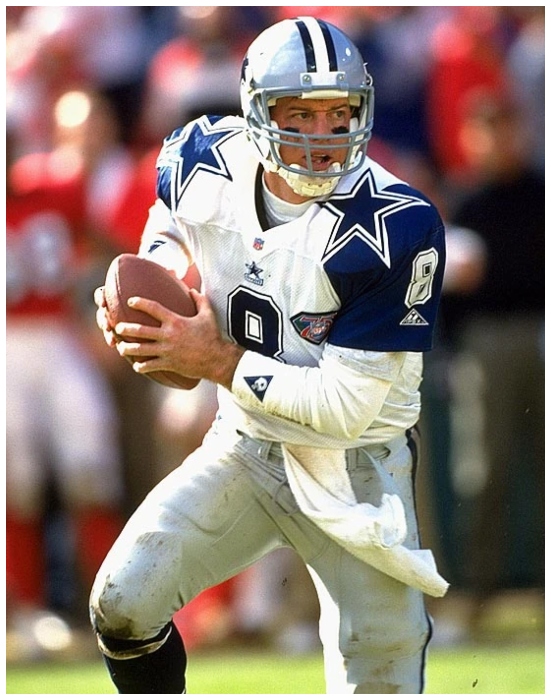
After his MVP 1997 season, Aikman’s record was an underwhelming 38-52 for the remainder of his 12-year career. And with a mediocre TD-to-INT ratio of 165-141, his passing numbers were never eye-popping. No doubt, Aikman deserves credit for capably leading a dynasty. However, the surrounding embarrassment of riches in Dallas propelled him to fame beyond his own individual abilities.
Joe Namath
Quarterback “Broadway Joe” Namath had the fortune of playing in the AFL during a time of limited talent compared to the dominant NFL. No doubt, Namath was a star who helped legitimize the AFL. But when examining just his statistical production, he was more hype than substance as a next-level talent.
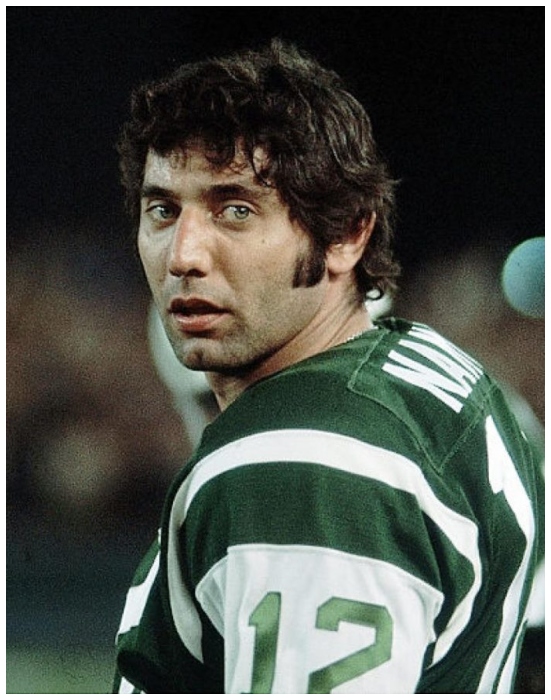
In the NFL following the leagues’ merger, Namath’s inadequacies were frequently exposed against tougher competition. While he deserves credit for raising the profile of the AFL and the Super Bowl III upset, Namath’s actual on-field performance paints the picture of an average QB who mostly achieved fame through bravado rather than raw ability. His legend exceeds his pedestrian numbers.
Chris Hanburger
Imagine walking into a room, expecting it to be a regular Monday, only to be told you’re now an NFL Hall of Famer. That’s what happened to Chris Hanburger, who couldn’t believe it himself. For someone who thought of football as merely a job to get through, the Hall of Fame induction was a surreal experience. Hanburger’s take on it? “I got into it with no fanfare and out of it with no fanfare.”
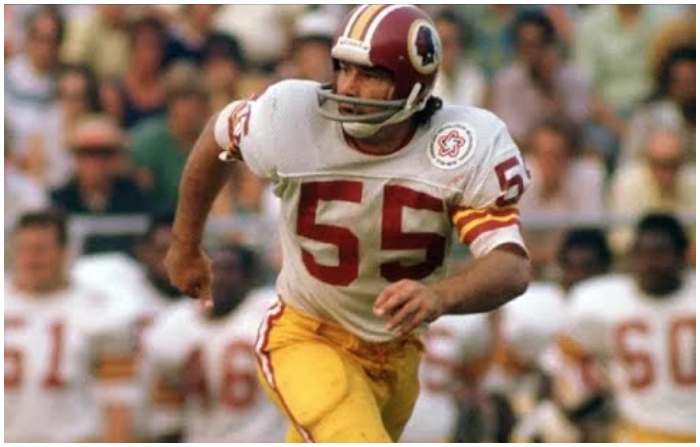
His humble approach towards the sport raises questions about the validity of his induction. When the inductee himself is shocked to enter the hallowed halls, it’s worth revisiting whether he should be there in the first place.
Andre Tippett
Andre Tippett is remembered mostly for his utter dominance as a pass-rushing menace during the mid-1980s. At his sack-filled peak from 1984-1987, the linebacker was nearly unstoppable getting to the QB. But unfortunately, that period of elite production was painfully brief. Outside of those 4 years, Tippett’s career was pedestrian at best.
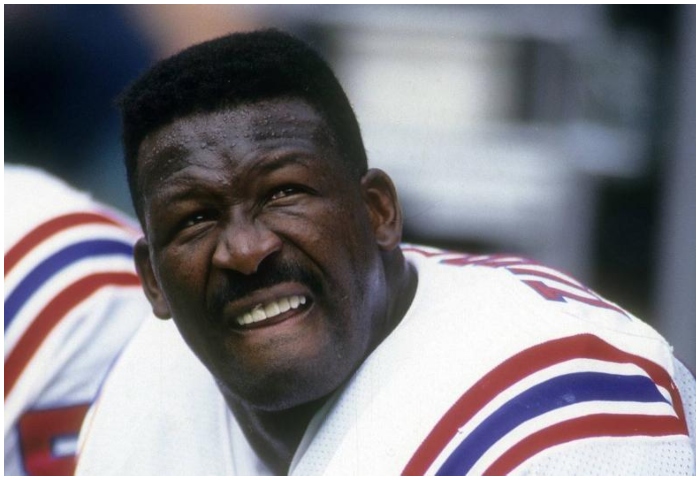
Though honored as the NFL’s Defensive Player of the Year in 1985, his flash-in-the-pan brilliance fell short of the sustained excellence required for Canton. The remainder of Tippett’s 11 seasons failed to match the lofty standard he briefly achieved at his very best.
Rayfield Wright
Rayfield Wright—a name you often hear when discussing talented tackles. But does being in that conversation warrant a Hall of Fame spot? Maybe not. Despite a 14-season career with six Pro Bowl appearances, Wright’s consistency was often in flux.
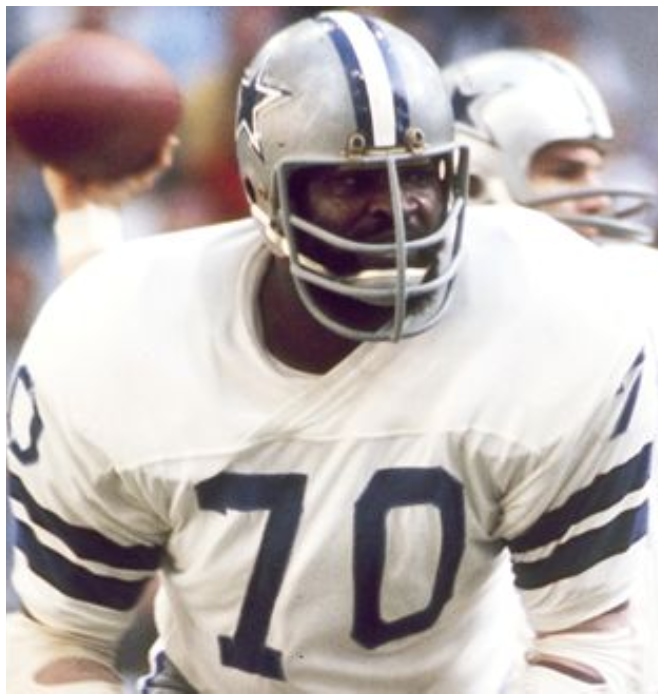
His peers outshined him, making his Hall of Fame status more of a participation trophy than an award for dominance. Football is subjective, but even in that realm, Wright’s entry into the Hall leaves experts and fans scratching their heads.
Frank Gatski
In a time far removed from the current narrative, the Cleveland Browns were a force to be reckoned with. Frank Gatski was part of this era, but was he a main protagonist or merely a background character? With only a single Pro Bowl to his name, it took almost two decades for him to receive his golden jacket.
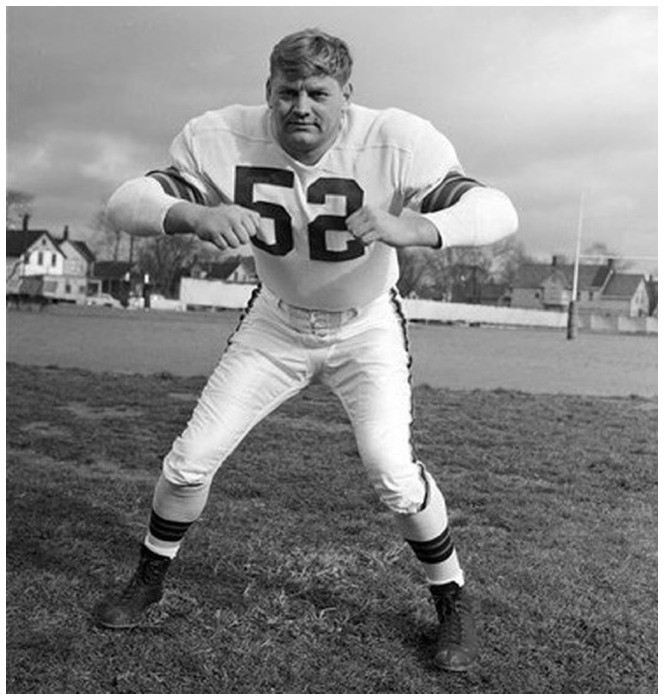
Perhaps nostalgia swayed voters more than Gatski’s own prowess. Does a role player from a bygone era of football glory deserve a spot among the sport’s greatest?
Paul Hornung
Flashy yet fleeting—this encapsulates Paul Hornung’s career. With an MVP title in 1961, Hornung seemed like a rising star, but that star quickly faded. He never reached the 700-yard mark in a single season and maintained an average of just 4.2 yards per carry; his statistics read more like a journeyman’s than a Hall of Famer’s.
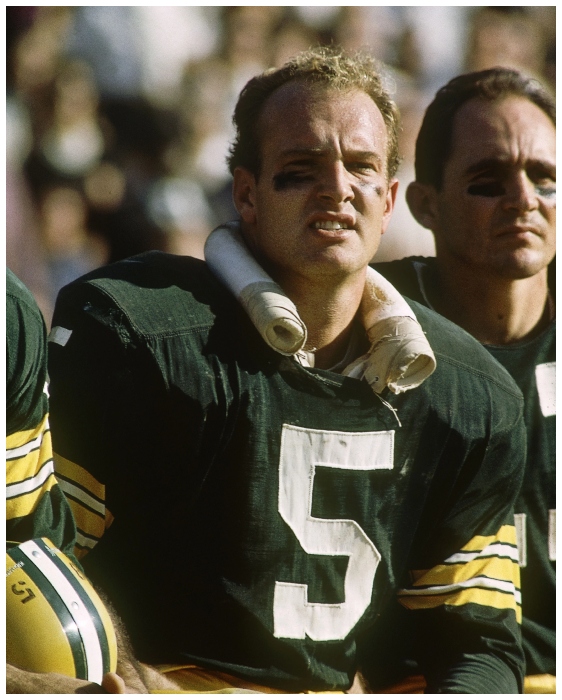
While memorable moments are essential, they can’t be the sole criteria for football immortality. Yet here we are, discussing a Hall of Famer whose resume seems to be missing a few bullet points.
Roger Wehrli
Like Hanburger, Roger Wehrli’s Hall of Fame induction puzzled many. Wehrli was competent, even good, but never truly elite. Despite playing as a defensive back, he never led the league in interceptions. He only really made a splash between 1975 and 1977.

And let’s not overlook the fact that it took over two decades for him to even be considered for the Hall. Should a player whose performance was essentially a blip on the NFL radar receive such a high honor?
Fred Dean
Two Super Bowl wins can’t be ignored, but should they be the fast-track ticket to the Hall of Fame? If that were the case, the Hall would need a significant expansion. Fred Dean’s estimated 93 sacks may sound impressive, but stats aren’t everything.
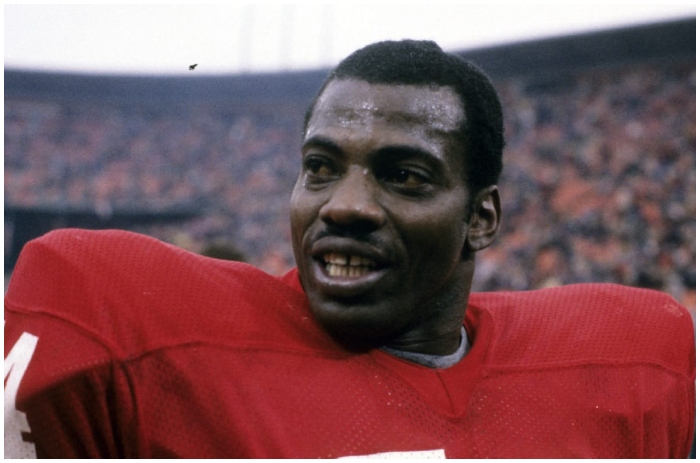
Dean was often pigeonholed as a one-trick pony—a proficient pass rusher but not much else. When compared to other linemen with more versatile skill sets and better stats, Dean’s inclusion in the Hall seems like a lower bar than what should be the gold standard.
Ray Guy
When punters with arguably better stats see Ray Guy in the Hall of Fame, it must feel like a slap in the face. The inclusion of a punter in the Hall isn’t inherently problematic, but the standard should be high. Guy’s induction left many puzzled. When the athlete himself admits that others might be more deserving, it triggers second thoughts.

Is he simply an average Joe who managed to receive football’s highest honor? Does his inclusion dilute the prestige of being in the Hall? It’s a subject that begs further discussion, leaving many fans questioning the selection criteria.
Warren Moon
Warren Moon shined brightly in the Canadian Football League before making his NFL mark with several 4,000-yard seasons. However, his prolific numbers came at the cost of an astronomical number of passing attempts.

While impressive at face value, his stats need to be scrutinized further. Moon was a volume passer, often attempting over 600 passes per season. This raises questions about whether he was a system quarterback rather than a naturally skilled player. Therefore, his Hall of Fame status becomes a topic open to interpretation and debate.
Richard Dent
Suppose even dedicated Chicago Bears fans describe Richard Dent as sporadic in his performances. How can he be in the Hall of Fame? Dent was notably weak against the run and often disappeared during games. While he may have a Super Bowl MVP to his name, even that award could have easily gone to other players on the team.

It’s as though he’s been awarded a lifetime achievement honor for a few shining moments. His inconsistent play and reliance on a strong defensive line cast shadows over his Hall of Fame credentials.
Curtis Martin
Curtis Martin was a powerhouse on the gridiron, a player any coach would covet. But he was never the best running back in any given year, despite his talents. That’s the crux of the issue. Does being consistently good—but never the best—warrant a Hall of Fame spot?
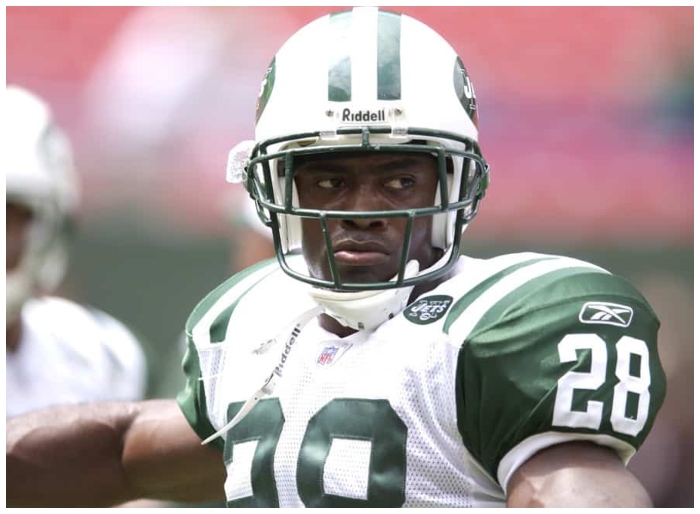
This question adds a layer of complexity to Martin’s case. Is the Hall of Fame a sanctuary for the truly great or just a collection of the very good? Martin’s inclusion certainly fuels this ongoing debate.
O.J. Simpson
O.J. Simpson’s Hall of Fame inclusion is as divisive as they come. While the Hall is supposed to focus solely on on-field achievements, Simpson’s notorious off-field activities have left many demanding his removal. Is it ethical to keep someone in the Hall of Fame when they’ve been involved in such controversial and tragic events?

YouTube
It’s a dilemma that shows the limitations of focusing solely on athletic prowess. The questions surrounding Simpson’s place in the Hall are both moral and ethical, offering a different dimension to the debate over who belongs.
Gale Sayers
Gale Sayers was undeniably talented, but his career statistics are underwhelming compared to today’s greats. His brief but flashy career raises questions about longevity and sustained excellence when it comes to Hall of Fame eligibility.
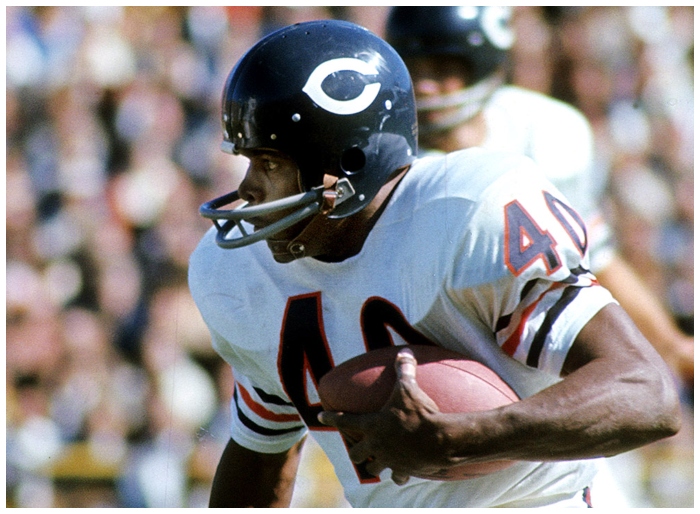
Is it fair to include a player whose career was a brief flicker rather than a lasting flame? Sayers’ stats are a small blip when compared to modern-day running backs, leaving many fans wondering if his induction was based more on potential than actual achievements.
YA Tittle
In a football era dominated by ground play, YA Tittle was one of the few standout quarterbacks. However, when you dig into the numbers, it’s hard to rationalize his Hall of Fame inclusion. Tittle only had two seasons where he threw for more than 3,000 yards and two years with over 30 touchdowns.

Adding fuel to the fire, he had a career littered with more interceptions than touchdowns. His completion rate was a mediocre 55%. All these stats combined make it difficult to affirm his legacy as a Hall of Famer despite his prominence in the 1950s.
John Mackey
Standing at 6’2″ and 224 pounds, John Mackey was a formidable tight end of his time. But does his nine-year career justify his Hall of Fame status? Mackey caught just 38 touchdowns during his tenure in the NFL. Modern tight ends like Travis Kelce have nearly matched that in only two seasons.
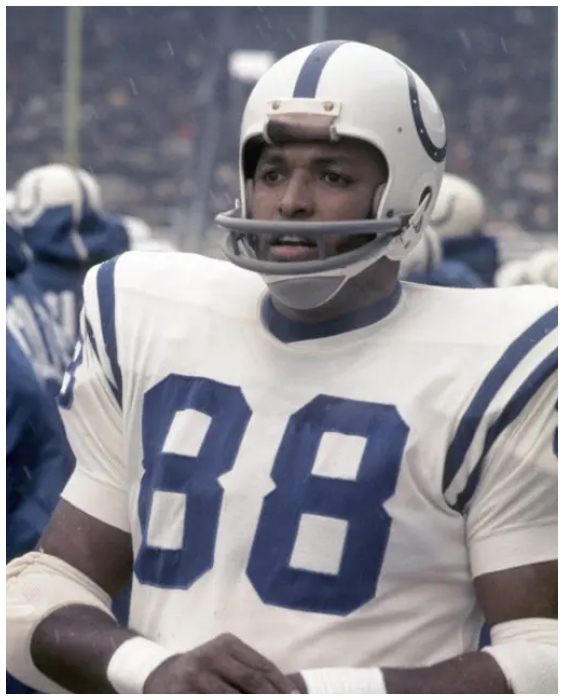
While comparing athletes across different eras is unfair, one can’t help but think that Mackey wouldn’t even make the practice squad today. His inclusion in the Hall raises questions about the game’s evolution and its impact on Hall of Fame credentials.
Curley Culp
Curley Culp was a multi-sport athlete who excelled in both football and wrestling. His credentials as the NCAA heavyweight wrestling champion are beyond reproach, but does his football career merit a Hall of Fame induction?

Sure, he won the Defensive Player of the Year award in 1975 and earned six Pro Bowl selections. Still, beyond that, his resume appears rather ordinary. He had a good but not extraordinary NFL career. The Hall of Fame usually reserves spots for transcendent talents, and Culp, while skilled, may not fit that mold.
John Stallworth
Like his Steelers teammate Lynn Swann, wide receiver John Stallworth built his reputation mainly on playoff heroics for Pittsburgh’s 1970s dynasty. Stallworth was likewise a 4-time Super Bowl champion. But when analyzing his individual accomplishments, his resume is nearly identical to Swann’s – and equally dubious for Hall of Fame enshrinement. In 14 seasons, Stallworth only made 3 Pro Bowls and earned just 1 All-Pro selection.
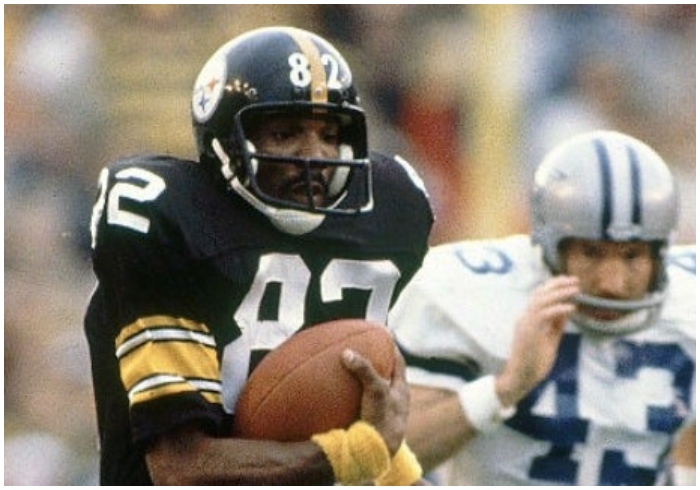
His best statistical season came in 1984 when he posted 80 catches for 1,395 yards and 11 TDs. They have solid numbers but nowhere near all-time greatness. Compared to Swann, Stallworth has slightly better career totals. But he lacked the sustained elite production and dominance expected from Canton’s immortal receivers. Playing alongside Swann on a loaded offense clearly boosted Stallworth’s fame. Overall, his individual numbers just don’t add up to actual Hall of Fame worthiness.
Marcus Allen
Running back Marcus Allen was one of college football’s brightest stars after winning the Heisman at USC. After being drafted 10th overall by the Raiders in 1982, he also maintained his golden boy aura in the NFL. And it’s not fair to say Allen wasn’t a quality pro. He scored an impressive 144 total touchdowns, flashing skills both as a runner and receiver. However, much of Allen’s success relied more on heavy usage than dominant play.

He averaged a modest 55 rushing yards per game for his career, hardly the mark of an all-time great. Allen was a well-rounded, versatile back. But he lacked the true game-changing impact expected from the best of the best. His reputation exceeds the more middling on-field production underlying his extensive usage.
Jerry Jones
Jerry Jones’ inclusion in the Hall of Fame is contentious, to say the least. Did he merely buy his way in, similar to how he acquired the Dallas Cowboys in 1989? His influence as an owner is significant, contributing to three championships for the Cowboys.

However, his playing days at the University of Arkansas—although commendable—are not extraordinary. Jones was the co-captain of the 1964 National Championship team. Still, many players with far more on-field accomplishments haven’t even been considered for the Hall. It makes one wonder if off-field contributions are overly weighted in the selection process.